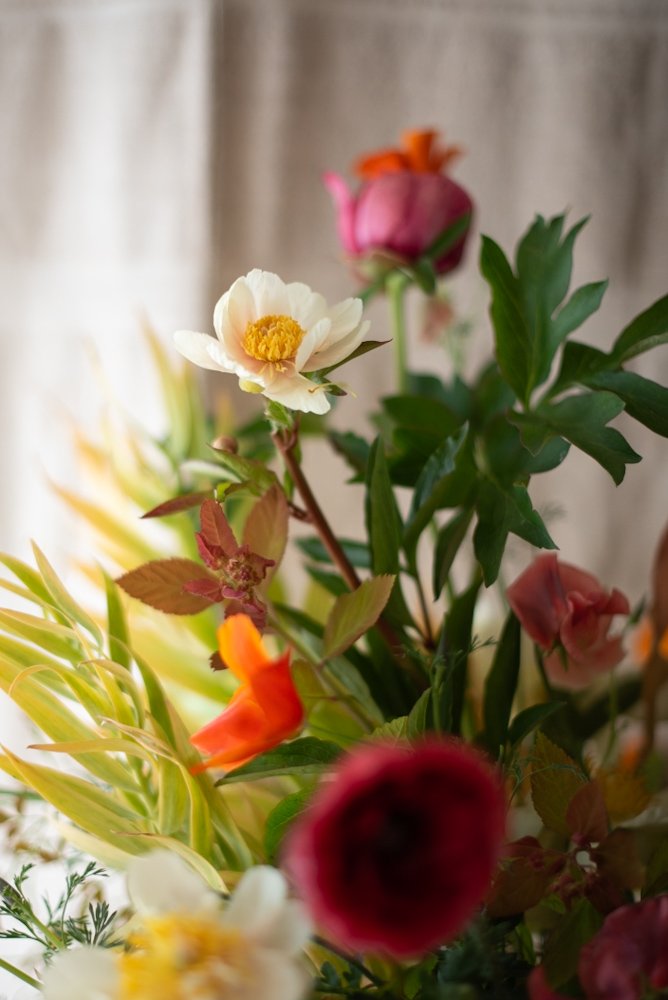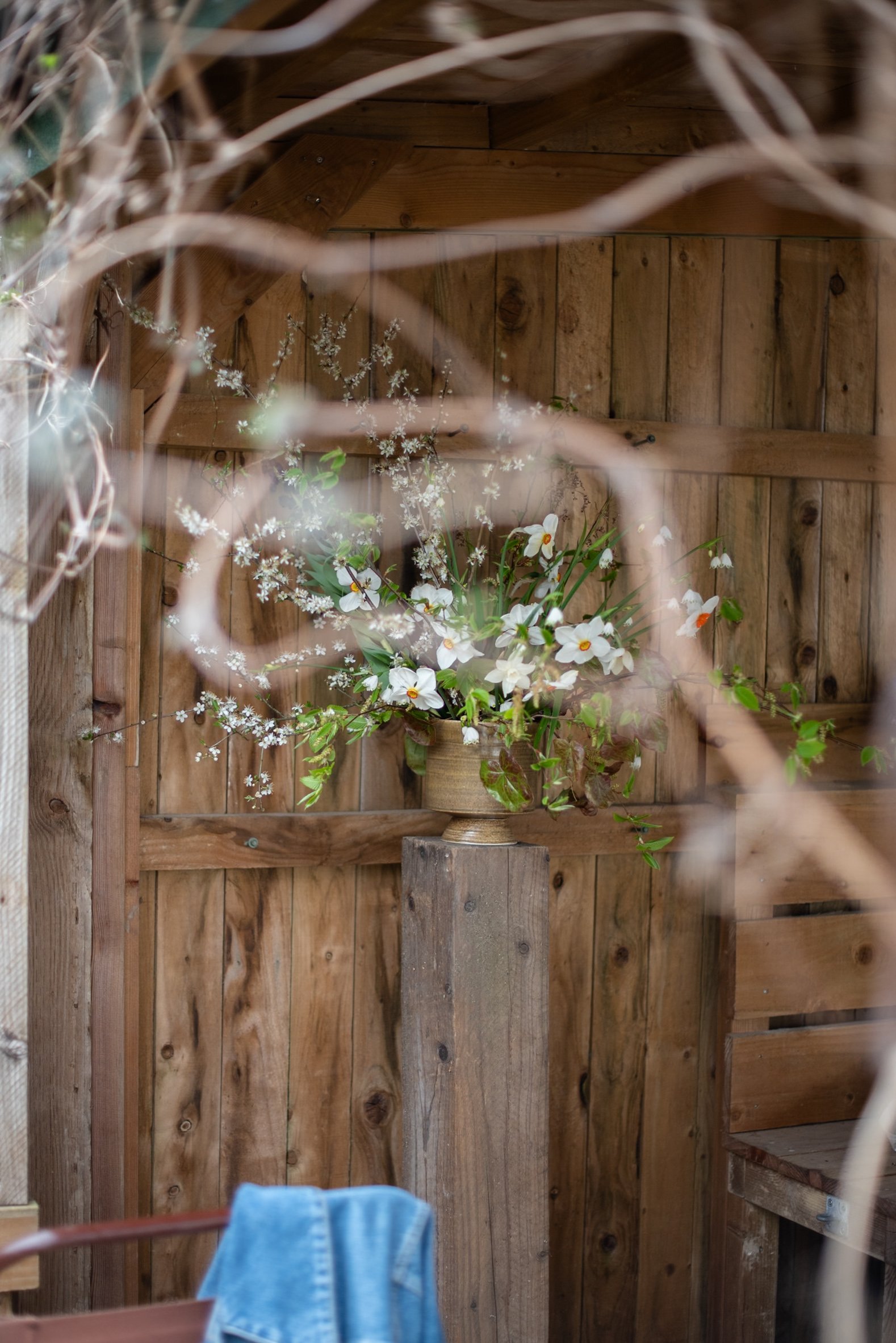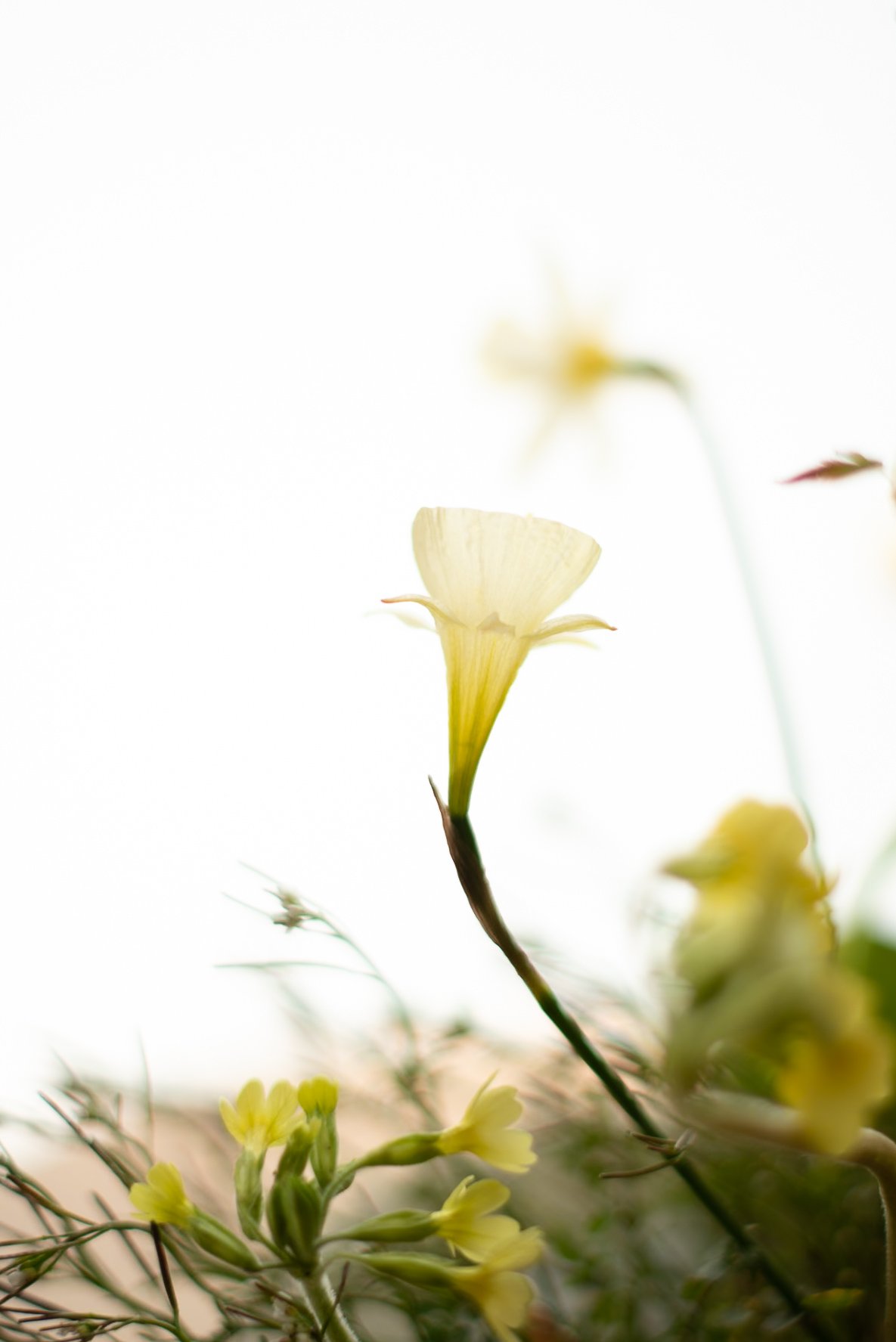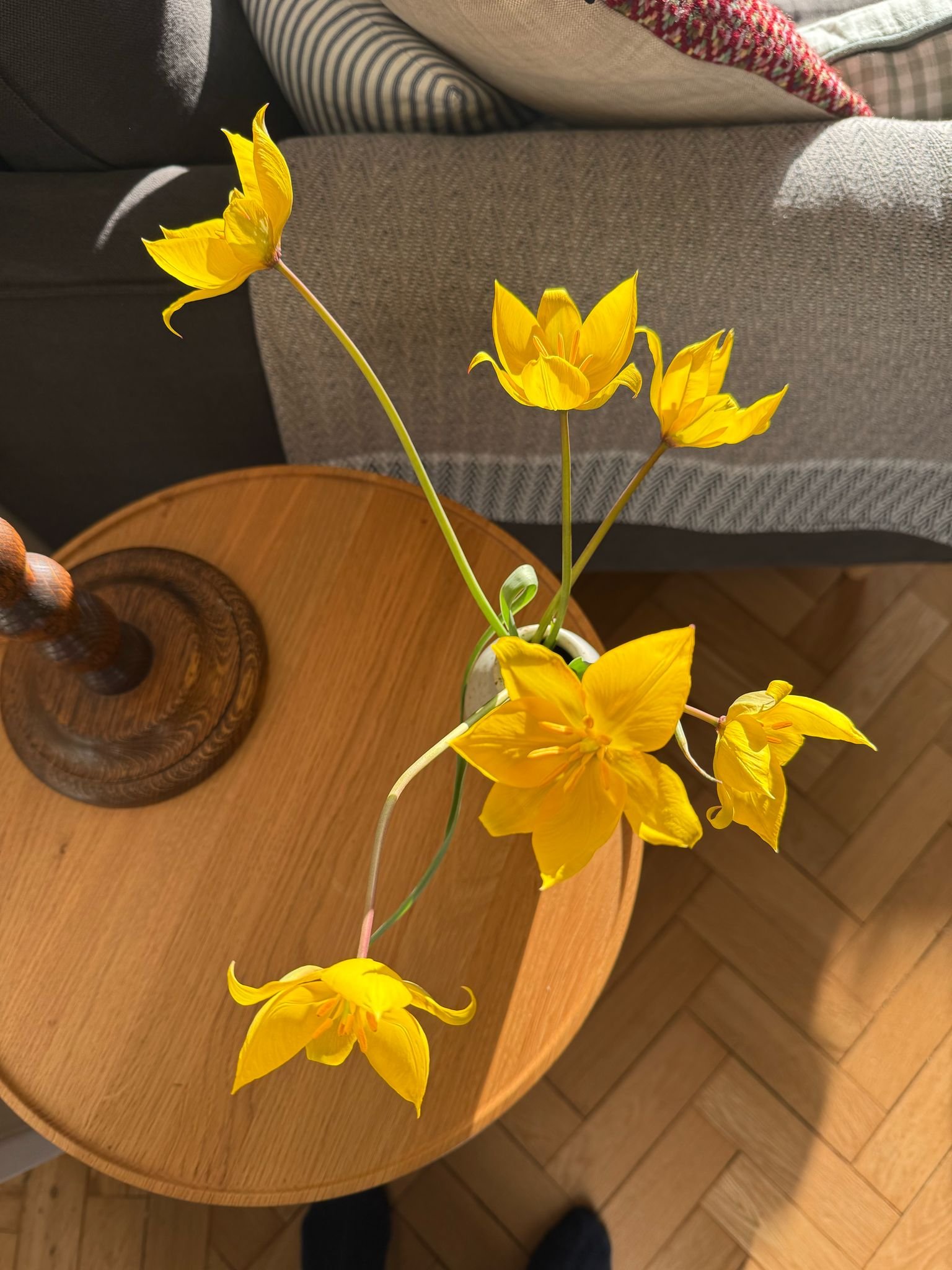PEONY, POPPY, DYING LEAVES
A curation of luscious late spring flowers and yellowing foliage
MAY
INGREDIENTS
Nandina domestica (sacred bamboo)
Aruncus dioicus (goat’s beard)
Fritillaria persica (Persian lily)
Heuchera 'Ginger Ale' (alum root)
Clematis montana 'Marjorie' (mountain clematis)
Rumex obtusifolius (bitter dock)
Peonia ‘Claire de Lune’ (peony)
Peonia Itoh ‘Canary Brilliants’ (intersectional peony)
Papaver ‘Shirley’ (poppy)
Lathyrus ‘King’s Ransom’ (sweet pea)
Allium ‘Gladiator’ (allium)
Tellima grandiflora (fringe cups)
Eschscholzia californica ‘Red chief’ (California poppy)
NOTES
This arrangement began with one single Heuchera leaf - soft yellow with a bleeding raspberry pink outline. I took this with me around the garden searching for materials that either matched or closely complemented these two colours. On the way I found the bleached Fritillaria persica which, having flowered earlier in the spring and now spent, have begun to fade to a creamy yellow. The dock leaf was a serendipitous find - yellowing too, though perhaps due to lack of water (it has been a dry spring so far) it was also marked with raspberry blotches. These ingredients might easily be dismissed as being ‘over’ or imperfect but I say that if they are useful within a colour palette, within an arrangement, then why overlook them? The combination of the peonies and zesty poppies with the unexpected addition of the flawed foliage is very evocative of our garden at this stage in late spring.








































